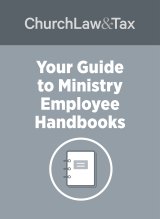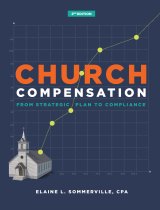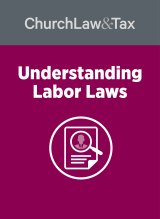

Key highlights from the government’s $2.2 trillion stimulus plan responding to COVID-19.

Editor’s Note: Additional updates regarding the CARES Act and its various provisions can be found on Church Law & Tax’s coronavirus coverage page.
The 900-page, $2.2 trillion Coronavirus Aid, Relief, and Economic Security (CARES) Act became law on March 27, 2020. It is the third package enacted by Congress in response to the COVID-19 (coronavirus) outbreak.
I have written a detailed analysis regarding key provisions from the CARES Act that are most relevant to churches and church staff. It is accessible to members of ChurchLawAndTax.com. Below is a brief, free overview covering some of these key provisions.
All US residents with adjusted gross income up to $75,000 ($150,000 married), who are not a dependent of another taxpayer and have a work eligible Social Security number, are eligible for the full $1,200 ($2,400 married) rebate. In addition, they are eligible for an additional $500 per child. This is true even for those who have no income, as well as those whose income comes entirely from non-taxable means-tested benefit programs, such as Supplemental Security Income (SSI) benefits.
Key point. The rebate is treated like other refundable tax credits, such as the child tax credit and earned income tax credit, and is not considered taxable income. For the vast majority of Americans, no action on their part will be required to receive a rebate check since the Internal Revenue Service (IRS) will use a taxpayer’s 2019 tax return if filed (or their 2018 return if they haven’t filed their 2019 return).
Key point. If an eligible employer receives a forgivable loan under the Paycheck Protection Program (see below), it is not eligible for the employee retention credit under this section.
Key point. The SBA released an updated “frequently asked questions” document on April 26, 2020, in which it states that a minister’s housing allowance is considered part of “payroll costs.” The document includes this question and answer:
Question: Does the cost of a housing stipend or allowance provided to an employee as part of compensation count toward payroll costs?
Answer: Yes. Payroll costs includes all cash compensation paid to employees, subject to the $100,000 annual compensation per employee limitation.
Key point. If an eligible employer receives an employee retention credit (see above), it is not eligible for the Paycheck Protection Program.
Key point. Learn more about how churches can apply for the Paycheck Protection Program through this article.
Key point. The SBA has issued a fact sheet providing additional specific details about the Paycheck Protection Program loans, along with the application form to use.
Paycheck Protection Program and Health Care Enhancement Act (CARES Act II)
The CARES Act appropriated $349 billion for PPP. However, the program met with immediate success and the initial appropriation was depleted in a few weeks. Congress quickly responded by enacting the “Paycheck Protection Program and Health Care Enhancement Act” (PPPHCE), the main provision of which was a boost in appropriated funds for PPP. Starting April 27, 2020, this allows the government to continue providing forgivable loans to cover the cost of payroll and operating expenses for small businesses.
Other provisions in the PPPHCE Act include:
The CARES Act was designed to mitigate the economic effects of the COVID-19 pandemic in a variety of ways. One important way is the creation of a new temporary federal program called the Pandemic Unemployment Assistance (PUA) program that provides (through December 31, 2020) payment to those not traditionally eligible for unemployment benefits. PUA provides up to 39 weeks of unemployment benefits. Individuals receiving PUA benefits may also receive the $600 weekly benefit amount (WBA) under the Federal Pandemic Unemployment Compensation (FPUC) program if they are eligible for such compensation for the week claimed.
Eligibility for PUA includes those individuals not eligible for regular unemployment compensation or extended benefits under state or federal law, including those who have exhausted all rights to such benefits. Covered individuals also include self-employed individuals, those seeking part-time employment, and individuals lacking sufficient work history.
The application of these provisions to church employees is unclear. State and federal laws exempt from unemployment taxes “service performed in the employ of a church, a convention or association of churches, or an organization that is operated primarily for religious purposes and that is operated, supervised, controlled, or principally supported by a church or convention or association of churches.”
Does the CARES Act’s temporary Pandemic Unemployment Assistance program apply to church employees on the ground that they “are not traditionally eligible for unemployment benefits”? A recent Department of Labor “Unemployment Insurance Program Letter” (No. 16-20) suggests that it may. It reads, in part:
The CARES Act was designed to mitigate the economic effects of the COVID-19 pandemic in a variety of ways. The CARES Act includes a provision of temporary benefits for individuals who have exhausted their entitlement to regular unemployment compensation as well as coverage for individuals who are not eligible for regular unemployment compensation . . . . These individuals may include . . . clergy and those working for religious organizations who are not covered by regular unemployment compensation, and other workers who may not be covered by the regular unemployment compensation program under some state laws.
Check with your state unemployment office to see if church employees in your state qualify for the PUA and WBA programs.
The Act encourages Americans to contribute to churches and charitable organizations in 2020 by permitting them to deduct up to $300 of cash contributions, whether they itemize their deductions or not.
Read my detailed summary for more details regarding provisions pertaining to “affiliation” rules pertaining to employee counts for PPP, more details about the availability of federal Economic Injury Disaster Loans (EIDL), education provisions, foreclosure moratorium and forbearance, utility shutoffs, and more.
Richard R. Hammar is an attorney, CPA and author specializing in legal and tax issues for churches and clergy.
Related Topics: COVID-19 | Employment | Staff Posted: March 28, 2020This content is designed to provide accurate and authoritative information in regard to the subject matter covered. It is sold with the understanding that the publisher is not engaged in rendering legal, accounting, or other professional service. If legal advice or other expert assistance is required, the services of a competent professional person should be sought. "From a Declaration of Principles jointly adopted by a Committee of the American Bar Association and a Committee of Publishers and Associations." Due to the nature of the U.S. legal system, laws and regulations constantly change. The editors encourage readers to carefully search the site for all content related to the topic of interest and consult qualified local counsel to verify the status of specific statutes, laws, regulations, and precedential court holdings.


If updated regularly, an employee handbook can offer valuable legal protection against civil court claims made by disgruntled staff members.



Regulations that pertain to hiring, firing, paying, disciplining, and supervising ministry employees.
Sign up for our free Church Law & Tax Update Newsletter.
Vital coverage of critical developments, news, insights, and resources about legal and tax matters affecting churches, clergy, staff, and volunteers nationwide.
This form is protected by reCAPTCHA and the Google Privacy Policy and Terms of Service apply.